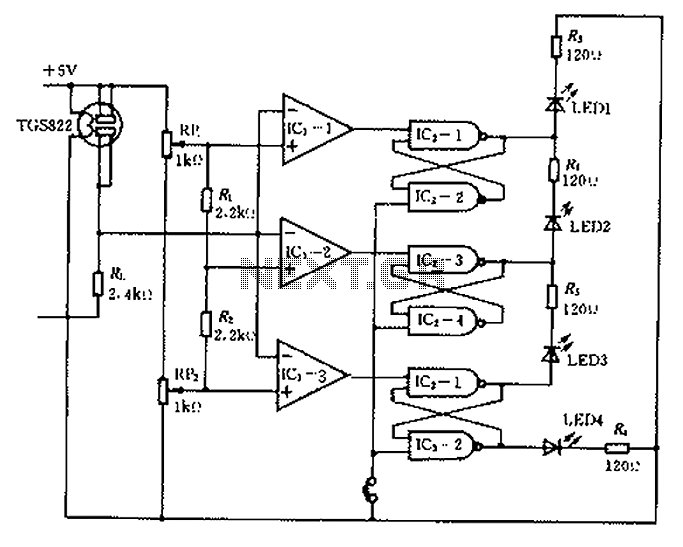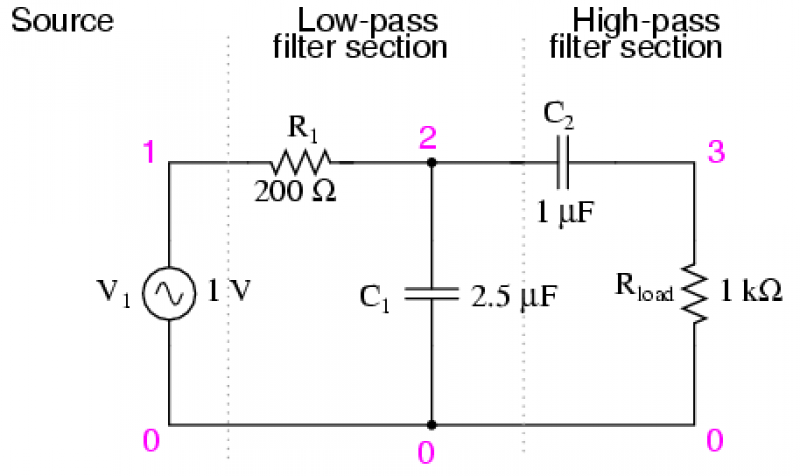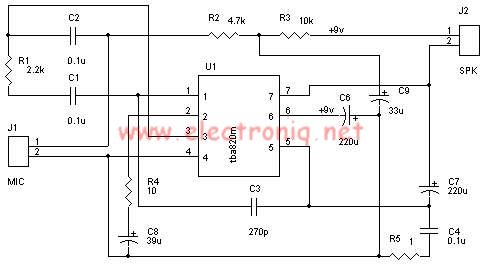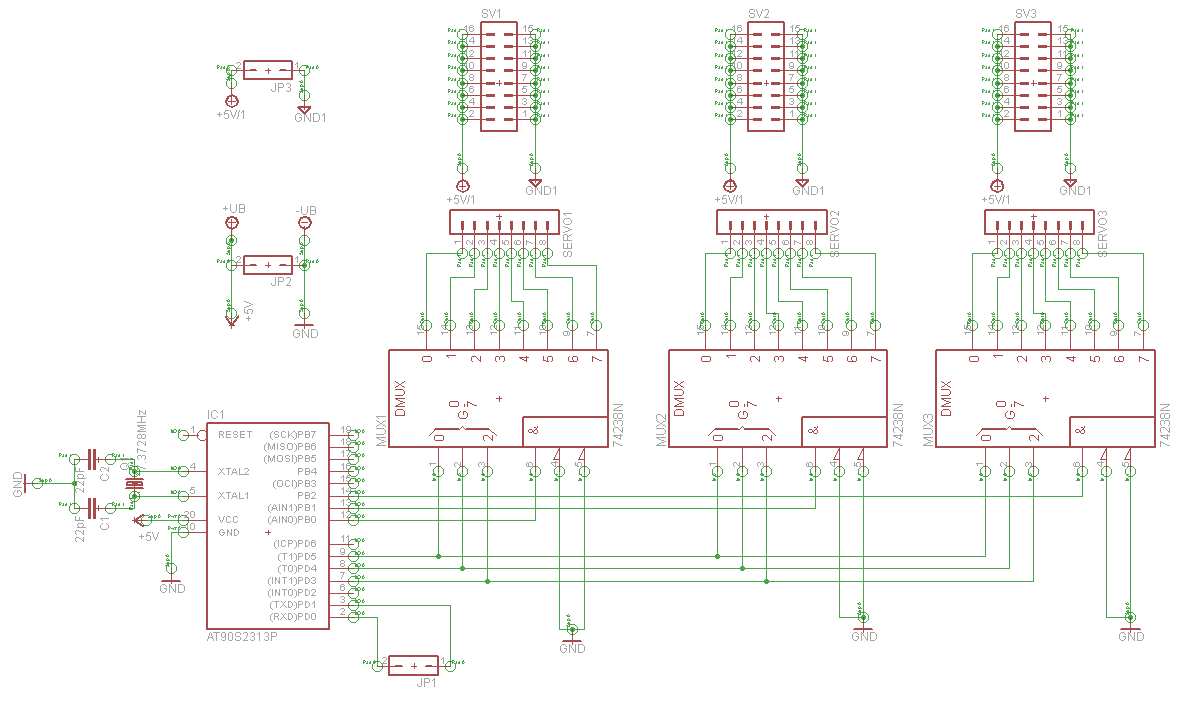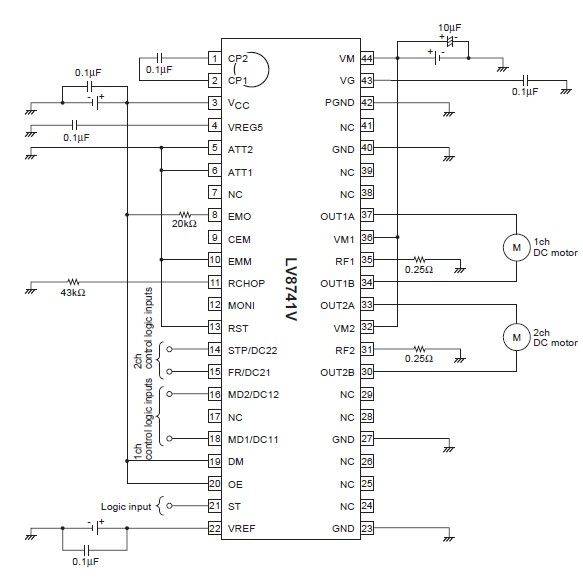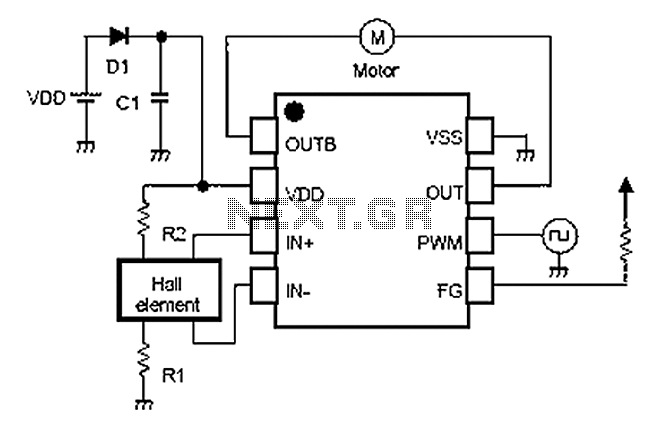
Highpass filters use modified equal-element design
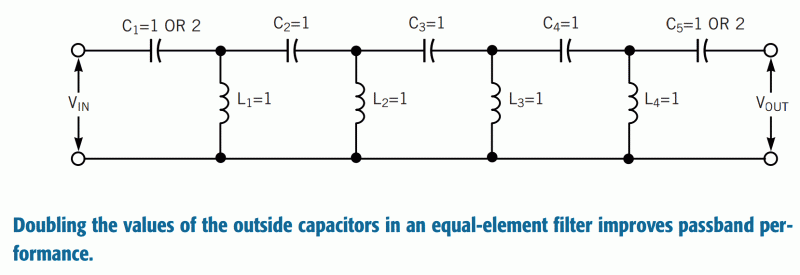
Using a modified equal-element design for a lumped-circuit lowpass filter has several advantages over the well-known equal-element design. The modified design exhibits superior passband performance with only modest degradation of stopband selectivity. Moreover, the modified design is simple and easy to manufacture. You can extend the modified equal-element design to highpass LC filters.
The modified equal-element design for a lumped-circuit lowpass filter incorporates a series of reactive components, typically inductors and capacitors, arranged in a configuration that optimizes the filter's frequency response. This design approach allows for a more efficient transfer of desired low-frequency signals while attenuating higher-frequency noise and interference.
In a typical implementation, the filter may consist of a combination of series and parallel connections of these reactive elements. The inductors are often placed in series with the signal path, while capacitors are used to shunt unwanted high-frequency signals to ground. The careful selection of component values is crucial, as it determines the cutoff frequency, which is the point at which the filter begins to attenuate signals.
The advantages of the modified design include improved passband characteristics, which result in a flatter response within the desired frequency range, and a more predictable roll-off rate beyond the cutoff frequency. This is particularly beneficial in applications where signal integrity is paramount, such as in audio processing or communication systems.
Additionally, the simplicity of the modified equal-element design lends itself to easier manufacturing processes, making it a cost-effective solution for high-volume applications. The design can also be adapted for highpass LC filters by rearranging the configuration of the inductors and capacitors. In this case, the inductors would be used to shunt low-frequency signals, while capacitors would be in series to allow higher-frequency signals to pass through, effectively blocking lower frequencies.
Overall, the modified equal-element design presents a versatile and efficient solution for both lowpass and highpass filtering applications, making it a valuable tool in the electronics engineer's toolkit.Using a modified equal-element design for a lumped-circuit lowpass filter has several advantages over the well-known equal-element design (Reference 1 and Reference 2). The modified design exhibits superior passband performance with only modest degradation of stopband selectivity.
Moreover, the modified design is simple and easy to manufacture. You can extend the modified equal-element design to highpass LC filters. 🔗 External reference
The modified equal-element design for a lumped-circuit lowpass filter incorporates a series of reactive components, typically inductors and capacitors, arranged in a configuration that optimizes the filter's frequency response. This design approach allows for a more efficient transfer of desired low-frequency signals while attenuating higher-frequency noise and interference.
In a typical implementation, the filter may consist of a combination of series and parallel connections of these reactive elements. The inductors are often placed in series with the signal path, while capacitors are used to shunt unwanted high-frequency signals to ground. The careful selection of component values is crucial, as it determines the cutoff frequency, which is the point at which the filter begins to attenuate signals.
The advantages of the modified design include improved passband characteristics, which result in a flatter response within the desired frequency range, and a more predictable roll-off rate beyond the cutoff frequency. This is particularly beneficial in applications where signal integrity is paramount, such as in audio processing or communication systems.
Additionally, the simplicity of the modified equal-element design lends itself to easier manufacturing processes, making it a cost-effective solution for high-volume applications. The design can also be adapted for highpass LC filters by rearranging the configuration of the inductors and capacitors. In this case, the inductors would be used to shunt low-frequency signals, while capacitors would be in series to allow higher-frequency signals to pass through, effectively blocking lower frequencies.
Overall, the modified equal-element design presents a versatile and efficient solution for both lowpass and highpass filtering applications, making it a valuable tool in the electronics engineer's toolkit.Using a modified equal-element design for a lumped-circuit lowpass filter has several advantages over the well-known equal-element design (Reference 1 and Reference 2). The modified design exhibits superior passband performance with only modest degradation of stopband selectivity.
Moreover, the modified design is simple and easy to manufacture. You can extend the modified equal-element design to highpass LC filters. 🔗 External reference
